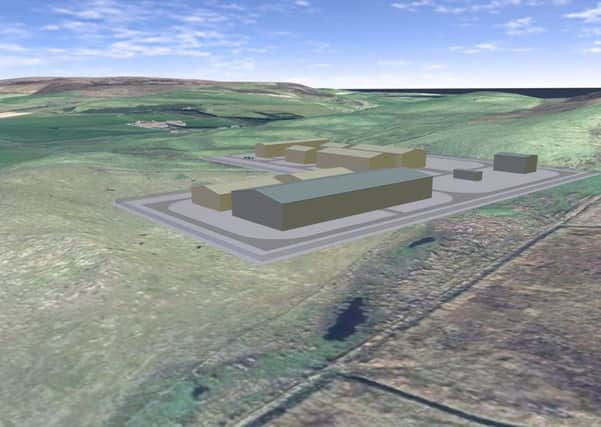Orkney’s undiscovered archaeology ‘at risk’ from major energy development


Orkney Archaeology Society has raised concerns about proposals by Scottish and Southern Electricity Networks to create a ‘highly prominent’ new substation at Finstown that will be linked to renewables projects by a mixture of underground and overground cabling.
SSEN says the development is required to insure that electricity generated by Orkney’s forthcoming wind and marine energy projects can be fed into the National Grid.
Advertisement
Hide AdAdvertisement
Hide AdMartin Carruthers, chairman of OAS, said the project could impact on ‘an unknown but likely substantial’ quantity of unrecovered archaeology across Orkney.
A number new artefacts have already been found as a result of preparatory surveys of the ground to be developed.
Some on the island have called for as much of the cabling to be laid underground to limit the visual impact of the island.
Mr Carruthers said the society generally backed this position but added that this approach posed a particular problem for the preservation of archaeological remains.
He said the landscape of Orkney, home to the best preserved Neolithic village in Europe at Skara Brae, could be considered an entire archaeological site in itself given the quality of finds made.
He said: “No one can currently know if there would be unrecorded archaeological sites present along the transmission route if it were to be undergrounded.
“Based on previously noted rates and densities of sites it seems extremely likely that sites would be encountered, especially over that distance in Orkney.
“There are many unknown sites (far more than are currently known) waiting to be encountered beyond those recorded in the official Sites and Monuments Record, and other archives.
Advertisement
Hide AdAdvertisement
Hide Ad“In fact, the preservation of archaeological remains and residues in Orkney is so good, and so prolific, that the entire landscape can, to some extent be justifiably referred to as an archaeological site.
“Any intervention in that landscape can have consequences for our knowledge and understanding of Orkney’s past.
Mr Carruthers said the society did not wish to see Orkney “frozen in aspic as a museum of past achievements” where obstacles were placed in the way of improvements to island life, including the economy.
However, he said the society wanted a programme of pre-works to be carried out as a “vital requirement” of undergrounding the transmission line.
SSEN has embarked on a large scale consultation with islanders over the plans.
It proposes to lay new sub-sea power cables from Dounreay in Caithess to Warebeth in Orkney, which will then connect to the new substation at Finstown.
SSEN said it had made a number of changes to the design of the substation following public feedback.
Primarily, the substation will no longer be in one large building but broken up into a number of smaller structures to better fit in with the landscape.
Advertisement
Hide AdAdvertisement
Hide AdSteel lattice towers will no longer be used to connect the substation to the subsea cable at Warebeth, with an underground cable to be used instead. Several overhead lines connected to substation will now be placed out of sight.
A spokesman from SSEN Transmission said that several surveys had already been carried out at all proposed routes and sites given Orkney’s “vast, rich and highly significant archaeology.”
He added: “In addition we have undertaken further targeted archaeology surveys along the 220kV underground cable route and at Finstown substation to identify unknown features.
“Initial investigations at the proposed substation site at Finstown have discovered some archaeological features, which is not unexpected given Orkney’s significant archaeological history.
“It remains unclear to what significance, if any, these have and we are therefore conducting further investigations to fully understand the features which will also help inform whether any further action is required.
“In the event of any archaeological discoveries of interest we are committed to ensure these are fully documented, preserved if possible, with our findings shared with interested parties.”
